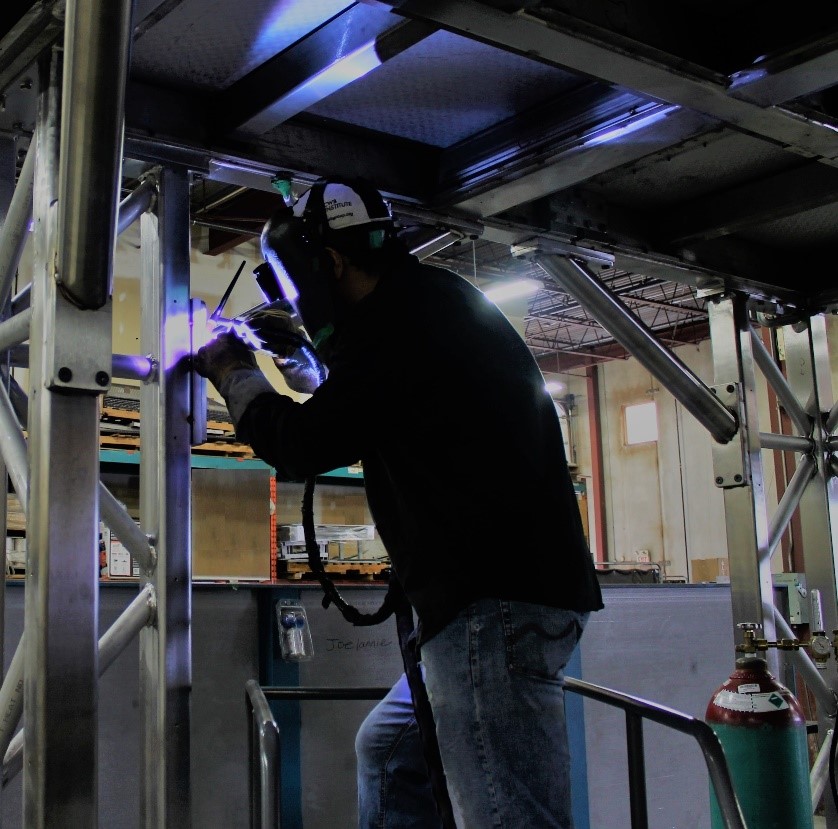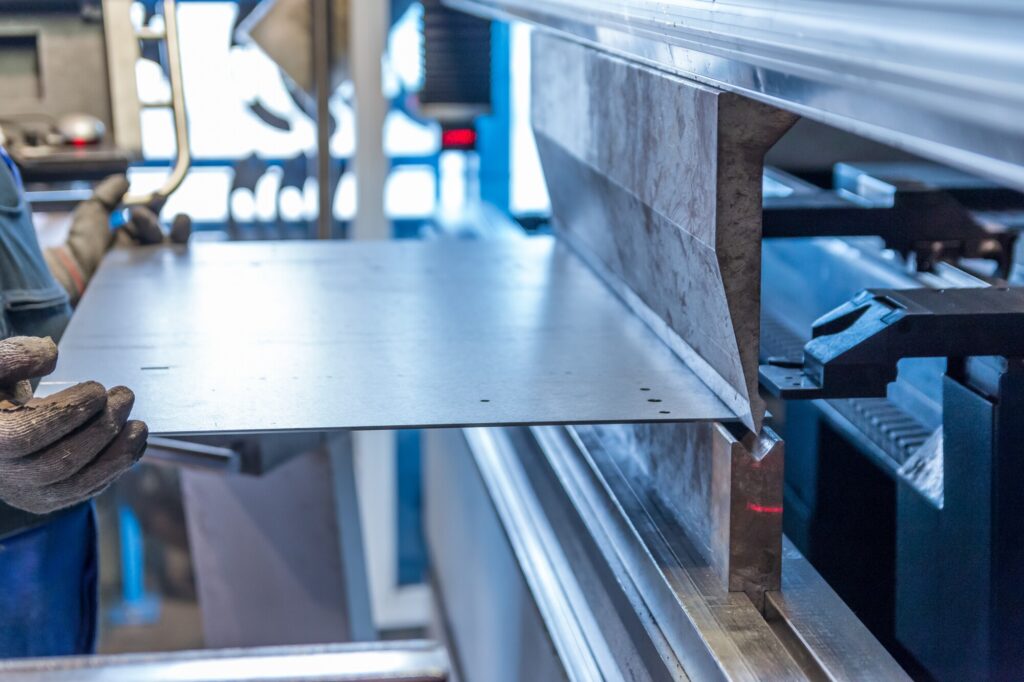Metal Fabrication Melbourne: Accuracy Engineering for All Needs
Metal Fabrication Melbourne: Accuracy Engineering for All Needs
Blog Article
Top Strategies for Optimizing Steel Construction Processes for Optimum Effectiveness
From thorough design intending to accepting cutting-edge innovations, the pursuit for optimal effectiveness in steel manufacture includes a complex method. Allow's explore exactly how these approaches can revolutionize steel manufacture processes, leading the way for unmatched performance and competitiveness in the market.
Efficient Design Preparation
In the realm of steel construction procedures, tactical and reliable layout planning plays a crucial role in enhancing manufacturing process and optimizing operational productivity. The design of a steel manufacture facility directly affects the efficiency of procedures, product circulation, and worker productivity. By meticulously making the arrangement of machinery, workstations, storage space locations, and product handling equipment, companies can dramatically minimize unneeded motion, decrease product handling times, and optimize the overall production process.
An effective design strategy takes into consideration variables such as workflow series, proximity of workstations, material handling courses, and safety regulations. It aims to produce a streamlined and logical flow of activities from basic material intake to the end product send off. Via reliable format preparation, business can get rid of traffic jams, decrease production downtime, and enhance the overall functional performance of the steel manufacture procedure.
Moreover, a well-balanced design plan enables far better application of offered area, improved communication in between employees, and improved safety techniques within the center. Generally, investing time and resources in creating a reliable design plan can generate considerable benefits in regards to boosted efficiency and cost financial savings for steel manufacture businesses.
Advanced Cutting Technologies
Utilizing sophisticated innovations in steel fabrication procedures improves accuracy, effectiveness, and overall manufacturing high quality. Advanced reducing modern technologies play a vital function in improving operations and optimizing the manufacture process. Among one of the most noticeable advancements in this field is the application of laser cutting systems. Laser cutting offers unequaled accuracy, permitting complex styles and intricate shapes to be reduced with very little product wastage. In addition, plasma cutting innovation has likewise changed steel construction by making it possible for swift and accurate reducing via electrically conductive materials. This approach is particularly efficient for reducing thick steel plates with rate and accuracy. Water jet cutting is one more cutting-edge technology that utilizes a high-pressure stream of water to puncture various kinds of products, consisting of steel, with outstanding accuracy. By incorporating these sophisticated reducing modern technologies into steel fabrication processes, makers can dramatically increase efficiency, minimize manufacturing times, and inevitably boost the quality of their products.
Automated Welding Systems

One of the vital advantages of automated welding systems is their ability to keep a high Alpha reo level of precision throughout the welding process. The precision supplied by these systems guarantees that welds are consistent and meet the required specs, leading to stronger and extra reputable steel structures. Furthermore, automated welding systems reduce the danger of human error, leading to less defects and remodel.
In addition, these systems can deal with intricate welding jobs effortlessly, consisting of welding in tight areas or on bent surface areas. This flexibility makes automated welding systems appropriate for a variety of steel construction applications, from large commercial projects to elaborate personalized styles. Generally, the execution of automated welding systems in steel manufacture processes substantially boosts efficiency, quality, and general job end results.

Inventory Administration Solutions
Enhancing operational efficiency and improving processes, effective stock administration services play an important duty in maximizing steel manufacture operations. By carrying out robust supply administration systems, steel construction business can make sure that the appropriate products are available when needed, lessening disturbances and delays in production schedules. Making use of innovative software program options enables real-time tracking of inventory degrees, allowing accurate forecasting of material requirements and preventing stockouts or overstock scenarios.
Additionally, stock management remedies assist in decreasing lugging expenses related to excess supply and enhance cash circulation by lining up inventory degrees with actual need. By categorizing materials based upon usage regularity and criticality, fabricators can focus on procurement and storage area allotment, better enhancing functional effectiveness. Furthermore, applying barcode or RFID innovation facilitates precise inventory monitoring and streamlines the surveillance of product motions within the center.
Constant Refine Improvement
To construct upon the gains made through efficient inventory administration remedies, the focus currently shifts towards driving continual process renovation within steel construction procedures. Continuous procedure renovation is a methodical strategy focused on enhancing effectiveness, reducing waste, and increasing general top quality throughout the construction procedure. By implementing a culture of continuous improvement, steel construction companies can determine traffic jams, enhance operations, and enhance sources to maximize efficiency.
One key aspect of constant procedure improvement in steel fabrication is the routine review and evaluation of production procedures. This entails event responses from workers, keeping track of essential performance signs, and identifying locations for improvement. By leveraging data-driven insights, business can make informed decisions to drive purposeful adjustments that favorably influence procedures.
Additionally, adopting lean production principles can dramatically contribute to refine renovation in steel manufacture. steel fabrication melbourne. Strategies such as worth stream mapping, five organization, and Kaizen events can help eliminate non-value-added tasks, systematize processes, and cultivate a society of technology and continual understanding within the company
Verdict
Finally, maximizing steel manufacture processes for maximum performance calls for careful planning, making use of advanced cutting innovations, carrying out automated welding systems, managing inventory successfully, and continually boosting processes. By incorporating these methods, suppliers can boost productivity, lower costs, and enhance general efficiency in the steel construction sector.
Via reliable layout planning, firms can get rid of traffic jams, decrease manufacturing downtime, and enhance the overall functional performance of the steel construction procedure. steel fixing.
Making use of sophisticated modern technologies in steel manufacture procedures improves precision, efficiency, and general manufacturing quality. By including these sophisticated reducing innovations into steel fabrication processes, manufacturers can substantially enhance effectiveness, decrease production times, and eventually improve the quality of their items.
On the whole, the execution of automated welding systems in steel construction processes significantly boosts effectiveness, quality, and overall task results.
One key facet of continual process improvement in steel manufacture is the routine review and analysis of production procedures. (Alpha reo)
Report this page